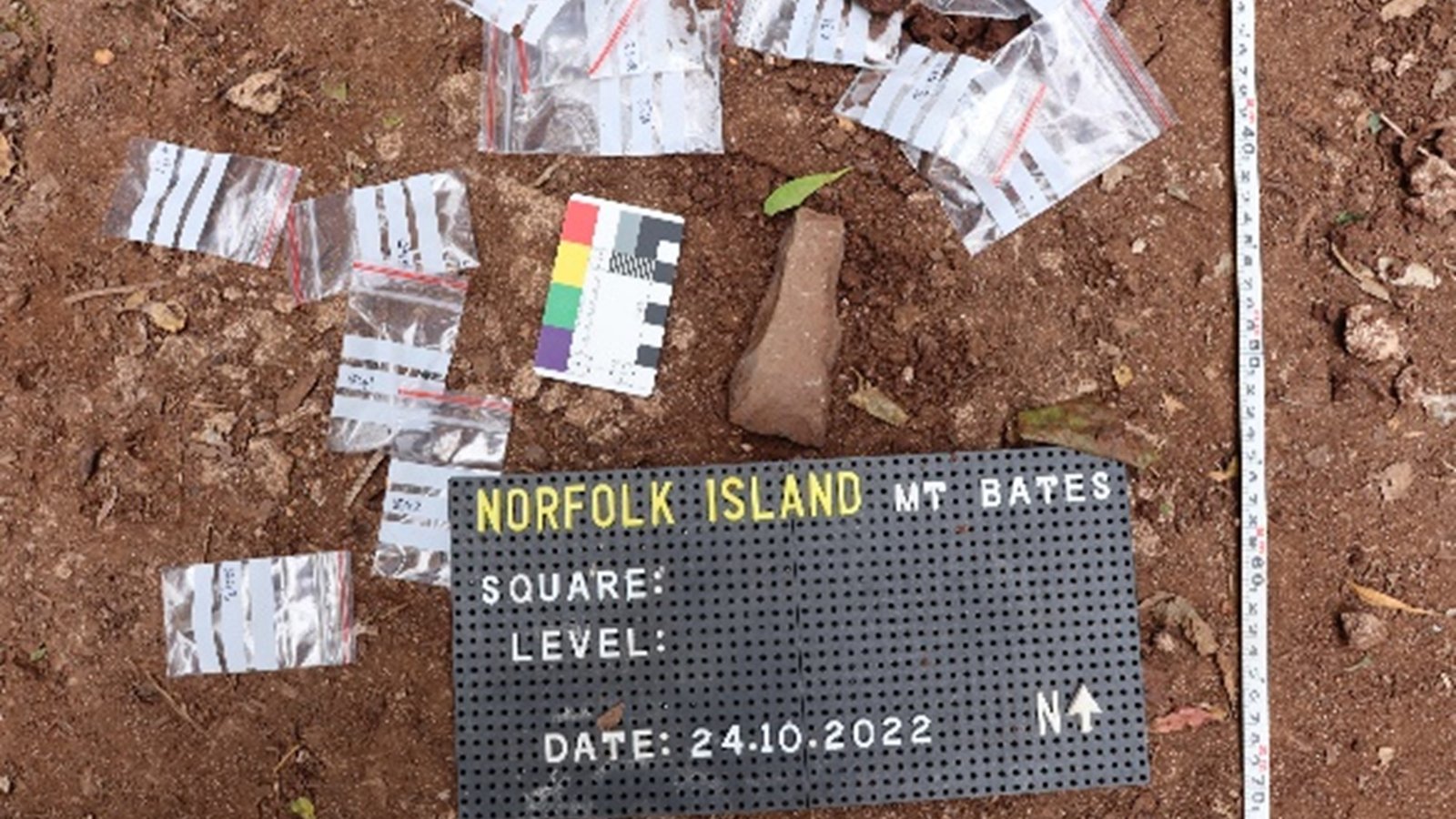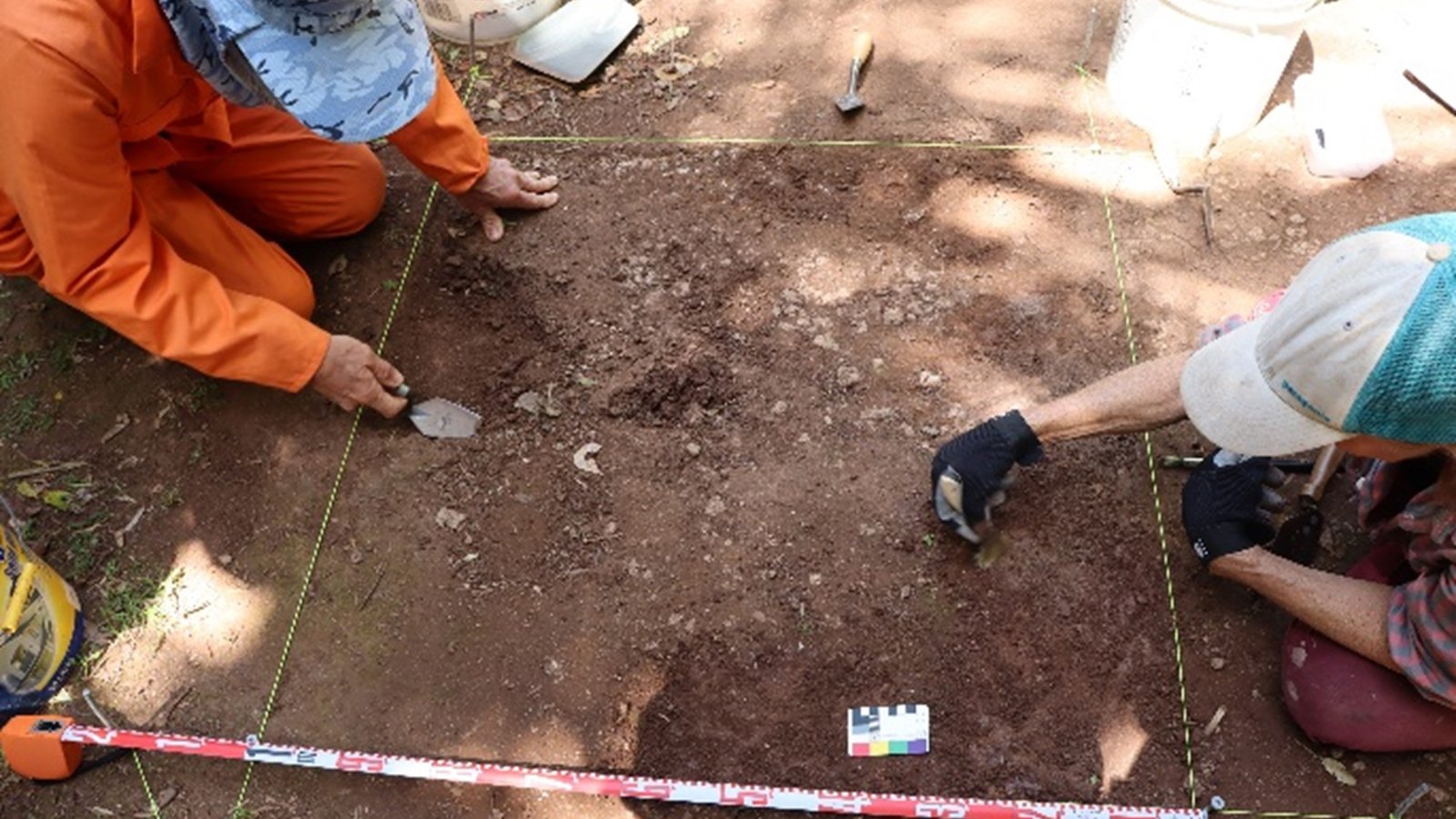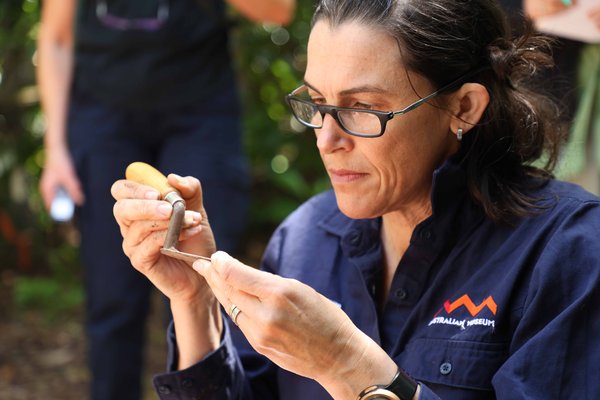Norfolk Island Polynesian adze-making site results just published
The first new archaeological site excavated on Norfolk Island in almost 30 years expands our knowledge of local Polynesian settlement. Evidence from a recently excavated stone-working site has now been published in the journal Archaeology in Oceania.

© Jerry Cook
In October 2022, archaeological excavations by Nicola Jorgensen (The University of Sydney), Dr Amy Way (Australian Museum and the University of Sydney) and the Norfolk Island community uncovered a new Polynesian adze-making workshop on Norfolk Island. This excavation at Mount Bates revealed the second in-situ Polynesian site to be recorded on the Island, the first being a settlement area on the island’s south coast, discovered in the 1990s. Polynesian settlers arrived and departed long before Europeans set foot on Norfolk Island and many aspects of their settlement remain a mystery. Where did they come from? Why did they leave and where did they go? How were they using the island? Without known living descendants from this population, finding in situ archaeological sites is critical to answering these questions.
The Mount Bates Saddle site sits along a walking track in the Norfolk Island National Park, in the north-western uplands between the twin peaks of Mount Pitt and Mount Bates. Surface collection and excavation of a 1m x 1m pit retrieved over 1,200 basalt artefacts from this site, including two Polynesian adze preforms (partially made adzes). The function of adzes in Polynesian contexts can be quite broad but commonly these tools were used for woodworking activities. As these two adzes were found in an unfinished state and surrounded by stone flakes associated with their production, this site most likely represents an adze manufacturing area. The nature of the site and the type of artefacts found suggest that the worked stone was sourced from nearby. However, the location of this stone source (i.e. a quarry site) still remains to be discovered.
The first Polynesian site on Norfolk Island was uncovered in the 1990s, during excavations at Emily Bay on the south coast. This work established the first Polynesian chronology for Norfolk Island, with material analyses dating Polynesian settlement between the early 13th to 15th centuries CE. Radiocarbon dates from charcoal from the Mount Bates Saddle site returned dates spanning 686-599 (+23) years before the present, which fall comfortably within this same timeframe. This suggests both sites are connected as part of a single phase of Polynesian settlement. It is possible that adze preforms produced at the Mount Bates Saddle site were then transported to the south coast for the final stages of manufacture (i.e. polishing) and use.

Creative Commons CC-BY-SA license
The Mount Bates Saddle site corroborates Polynesian settlement between the 13th to 15th centuries CE and is clear evidence of local tool manufacture. This site also provides evidence that the extraction and processing of stone by Polynesian settlers was not limited to the south coast. Although many questions still remain unanswered, this new evidence opens up the entire island to the possibility of further Polynesian sites. Beyond its scientific value, the Mount Bates Saddle site also holds a deep significance for the Norfolk Island community. In the words of a Norfolk Islander local, Arthur Evans, Tahitian descent on his matrilineal line: “Being a part of the recent Mount Bates track excavations of the Polynesian adze artefacts gave me a tangible and deep emotional reminder of where and who we come from (uckluns cum frum)… I as a Norfolk Islander have a deep-seated admiration for the courage and tenacity of those Polynesians who went before us, arriving here on Norfolk Island hundreds of years ago.”
This excavation and recent publication marks the culmination of several years of research and collaboration with the local Norfolk Island community. The Mount Bates Saddle site both expands the known range of Polynesian occupation on Norfolk Island and highlights the potential for future discoveries. Finding additional in situ sites (such as a quarry site) remains a critical target to resolve some of the mysteries surrounding this settlement. We must hope it is not another 30 years before more evidence comes to light.
Written by Nicola Jorgensen, Masters Student, The University of Sydney.
More information
Jorgensen, N., Way, A.M., and Flexner, J. 2023. A 600-700-year-old basalt adze production site from Mount Bates, Norfolk Island: 1-11
Australian Geographic
Australian Museum expedition
Acknowledgements
This research and new publication present the preliminary results of Nicola Jorgensen’s ongoing postgraduate research through the University of Sydney. The excavation of the Mount Bates Saddle site was supported by expedition funding from the Australian Museum. Special thanks to my supervisors Dr Amy Mosig Way and Dr James Flexner, and Snowy Tavener, Arthur Evans and Deborah Jorgensen for their invaluable contributions. I am deeply grateful to the Norfolk Island community for their support, thanks f’ucklun (“Thanks for all of us” in Norf’k language).









